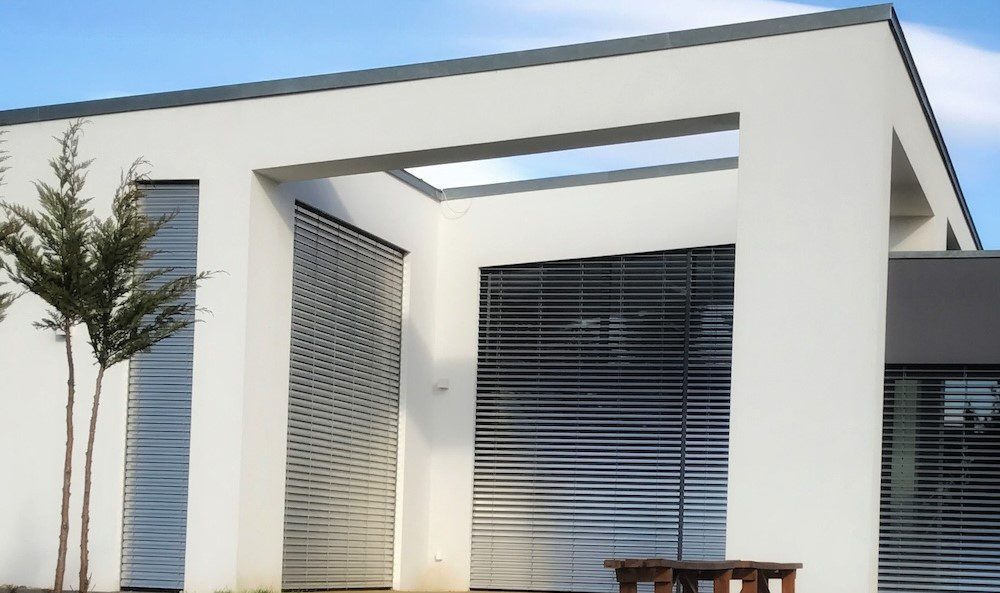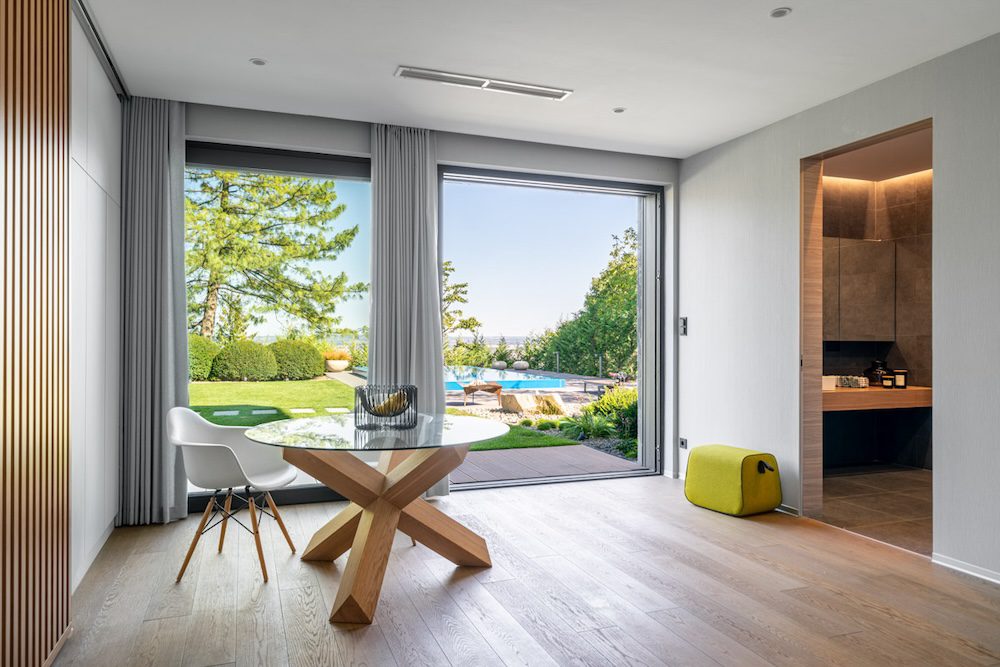BAU FAIR 2023: The Battle of the Construction Industry Against Carbon

The “BAU 2023” construction industry trade fair took place in Munich from April 17 to 22, 2023. This exhibition is the largest and most significant construction industry event in Europe, providing guidance every two years on planning and construction technologies, building material production, and installation techniques. KAV Hungária sent eight engineers to Germany to process the valuable information and reconsider their domestic and international sales strategy.
Unfortunately, the 2021 exhibition was canceled due to Covid, so we had high expectations and even more curiosity when we visited the exhibitors’ stands. The Germans didn’t forget how to organize an exhibition: with professional organization and execution, we got to “taste the fruits of our profession.” From buying tickets to parking, smoothly running public transportation connections, and even getting a taxi within 10 minutes after closing hours, this should be a role model for all Hungarian exhibition organizers.
The “BAU 2023” stands of multinational construction industry exhibitors were dominated by the fight against carbon, to which they subordinated the exhibited product and service structures. However, I couldn’t clarify many things from the sometimes noisy and overtly straightforward communication. For example, I would mention the lack of a methodology that comprehensively examines the environmental burden of mining, processing, manufacturing, sales, transportation, incorporation, and the entire lifespan process of the carbon footprint. Everyone looks at their own part of the chain, including the lifespan, in more substantial companies, and presents their results within that context. Most manufacturers no longer investigate the environmental burden of mining and processing or the emissions from manufacturing facilities or deliveries (or installations) separately, probably because examining them separately or together doesn’t yield such favorable results. This effort means something, but the coming years will determine whether the buyer is willing to pay the 35-130% premium for carbon-reduced products. Yes, in many cases, this is the premium for using carbon-reduced products compared to traditional products, although stricter EU environmental regulations could push multinational companies in the right direction. I am curious about the response of the Hungarian high-rise construction industry, which struggles with contract shortages and is preparing for a one-and-a-half-year hounding, especially in the unique Hungarian market, where only prices are considered, not products.
Schüco won the unofficial stand construction competition again at BAU 2023 with a very impressive stand, albeit with a different theme than before. The professional Asian “idea thieves” purchased their unlicensed post-production information here, so this year’s stand no longer featured photographable 1:1 profile cross-sections; instead, it featured testable finished products. This danger will still exist with designer download options, but a time advantage will come with significant benefits in Asian tenders for large projects. I also experienced that some YouTube influencers (viewership champions) would envy the visual and technical equipment with which some visitors hunted for information.
Schüco’s stand was very informative and comprehensive even without cross-sections, and in my subjective opinion, it showed one of the most visited stand images, based on the experienced crowd. High-rise buildings, large communal projects, and builders received significant ammunition for development, ranging from modular facades to diagonal facade technologies and the unfortunately now popular explosion-proof curtain walls. The fire-resistant product range has also improved significantly, and a new, higher-load and large-surface motorized skylight has been added to the portfolio. Collaboration with hardware and motion mechanism specialists has made new door hardware and opening methods available, but cooperation with JANSEN, the steel system manufacturer, continues to be unwavering. They made an effort to please home builders as well, as their new frameless sliding door systems and pivot door solutions, which have been in development collaboration with Soreg and Airlux for years, introduced many new and innovative products. Most of the innovations can be ordered within months, putting their competitors in a difficult position.
We also visited the stand of JANSEN, the most popular steel system provider on the Hungarian market, where they put on a great show this year. We could choose from among steel curtain walls, windows with integrated operable sashes, special hardware solutions, and narrow frame systems. For the first time this year, they also prepared an outdoor exhibition box next to the large indoor exhibition area, where they examined the possibilities of their ARTE system. I was pleasantly surprised by the narrow-framed steel sliding door still under development, which could become a groundbreaking product on the European market.
Reynaers Aluminium, one of our suppliers, also performed well. Their stand, where new developments were also featured, attracted a lot of interest. In addition to the new accessories for the Hifinity frameless sliding door system, we finally saw the motorized version of the very successful Masterline Patio lift-and-slide door system, as well as their upward-opening motorized window, which we colloquially refer to as the “guillotine” window. We saw both versions of their pivot (asymmetrical axis) entrance door produced by KAV, and furthermore, there is already a pivot door with an operable side element for extra-wide passage. The expansion of their SlimLine narrow frame product range also proved successful, and their 60mm curtain wall system with hidden-sash opening sections, as well as their 35mm curtain wall solution, were impressive. They also made an effort to demonstrate the usability of narrow ventilation sashes for family and office buildings, as these can now also be ordered with a hidden motor.
There were also numerous exhibitors from the shading technology sector, although the absence of the Austrian Schlotterer, which is successful on the Hungarian market and records significant order growth every year, was incomprehensible to me. Warema, one of the multinational companies in the solar protection business, showcased its latest developments, but the area of the German manufacturer, which is present in every segment, was more essential and focused on establishing connections rather than details. This exhibitor perspective is closer to me as well, as it allows for more time to explore other stands in one or two days.
We also saw real gems at the stands of Cortizo, ALURON, or HUECK, and it will be worth paying more attention to their window systems for both customers and designers.
Regarding the general view of the aluminium window and door developer and manufacturer segment, we are progressing along the path defined four years ago, which included the acceptance of deeper glazing due to improved thermal insulation, narrow (preferably not visible in the closed position) frame systems, narrow hardware technologies, and structural possibilities supporting extraordinary height requirements. This hasn’t changed much this year, unless you consider that the Pivot (asymmetrical axis) door has become an everyday solution, despite its – except for a few exceptions – everyday electronic, wind, and water sealing issues. Construction professionals will still have a tough time with windows and doors; I saw gilded junk, undervalued wisdom, and later lots of trouble with “galactica.” The picture is mixed, and significant selection will be needed among the emerging possibilities. Unfortunately, I have bad news for those looking for good quality at a low cost. There won’t be any, as it is now mathematically impossible due to current costs.
On the way home, I thought that there is actually not much to be ashamed of regarding the Hungarian manufacturing lineup. We know how to produce excellent and beautiful products, we have cool and well-equipped factories in Hungary, tried-and-tested and experienced professional teams. There are competent system administrators, sufficient professional care, and resilient will.
MoreNews
































